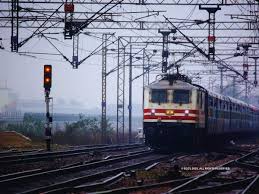Railways may hike passenger fare from July 1, to earn Rs 700 cr more in FY26

In a significant yet measured move, the Ministry of Railways has announced a modest fare hike for passenger trains effective July 1, 2025. This revision comes after a gap of more than four years and is expected to add ₹700 crore to the railway’s earnings in the current fiscal year.
The fare revision is being described as the “smallest in decades,” with minimal impact on the common man and daily commuters. The government has consciously decided not to revise suburban and short-distance fares, which account for a large portion of daily railway users in India.
💸 What’s Changing in the Fare Structure?
Here’s a breakdown of the revised fare rates as announced by the Indian Railways:
- AC Class Passengers: Fares to increase by ₹0.02 per km
- Non-AC Mail and Express Trains: Fares will go up by ₹0.01 per km
- Second Class (General): No change for journeys up to 500 km, but for longer distances, the fare will increase by ₹0.005 per km
- Suburban Services & Season Tickets: No hike
This means, for example:
- A 1,000 km journey in AC class will cost ₹20 more
- A similar journey in non-AC Express will be costlier by ₹10
- Passengers traveling less than 500 km in general class will see no impact
🧾 Why the Railway Ministry Took This Step
The Indian Railways has long subsidized passenger fares. According to ministry data:
- Suburban services recover only 30% of their operating costs
- Non-AC long-distance trains recover around 39%
- AC classes cover just 3.5% of the total operational cost
Despite periodic increases in freight charges, the financial gap created by low passenger fares remains substantial. This latest revision is an attempt to balance the books without placing a heavy burden on travelers, especially those from economically weaker sections.
A railway official remarked, “This is a pragmatic approach. Instead of a blanket hike, we’ve selectively adjusted fares in higher classes and long-distance segments.”
📈 Expected Revenue Impact
The fare increase is projected to bring in:
- ₹700 crore in additional revenue for the remaining portion of FY26
- If maintained for the full fiscal year in FY27, the estimated gain could touch ₹920 crore
While this may not drastically change the railway’s overall budget, it’s a step toward financial sustainability and reducing dependence on budgetary support.
🛤️ Who Will Be Affected?
🧳 Long-Distance Passengers
The hike will primarily impact passengers on long-distance routes, especially those traveling by AC coaches or non-AC mail/express trains. These segments are typically not used by daily wage earners or low-income commuters, reducing the social burden of the hike.
🏙️ Urban/Suburban Commuters
For cities like Mumbai, Chennai, and Kolkata, where suburban train services are the lifeline for millions, fares remain untouched. Daily commuters relying on monthly or quarterly passes can breathe a sigh of relief.
🪑 General Class Travelers
Passengers in second-class general coaches, often the most cost-sensitive segment, will only see marginal increases and only on journeys exceeding 500 km.
📲 Other Reforms Rolling Out in July
Alongside fare changes, Indian Railways is introducing new digital reforms:
- From July 1, Aadhaar verification will be mandatory for booking Tatkal tickets online via IRCTC.
- Starting July 15, Aadhaar-linked OTP authentication will be extended to all ticket booking platforms, enhancing security and preventing misuse.
🏛️ Fare Hike in Context: A Balancing Act
This fare hike marks the first such revision since January 2020, when Indian Railways made a minor increase in base fare for non-suburban trains. Since then, the pandemic delayed any further changes due to widespread economic distress.
The 2025 revision comes at a time when Indian Railways is making large-scale investments in:
- Modernizing rail infrastructure
- Electrification of routes
- Vande Bharat and other premium train rollouts
- Enhanced passenger amenities
By targeting better-off segments, the government is trying to generate more revenue while avoiding adverse impacts on lower-income travelers. This policy aligns with the broader goal of ensuring inclusive growth with financial prudence.
🧭 Final Thoughts
While any fare increase can cause concern, this one appears balanced, well-timed, and narrowly targeted. The real burden on travelers is minimal—often just a few rupees more per journey—but the financial benefit for Indian Railways is significant.
With infrastructure upgrades underway, digital booking becoming more secure, and the commitment to keeping suburban travel affordable, Indian Railways is taking incremental steps toward a more efficient and financially stable future.






